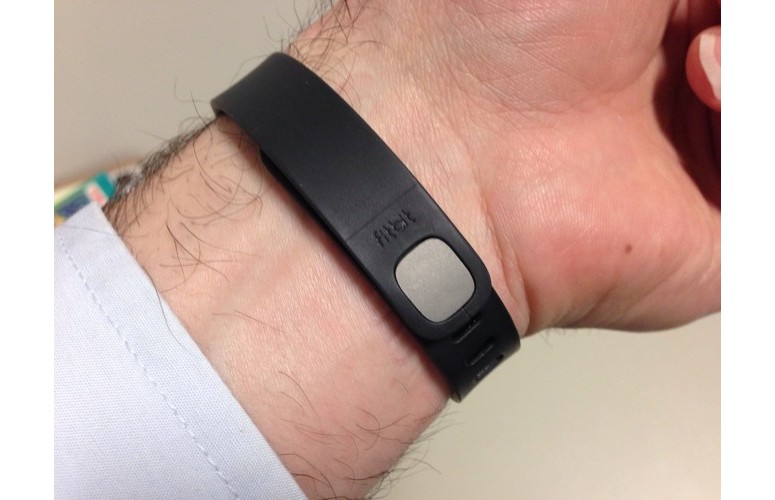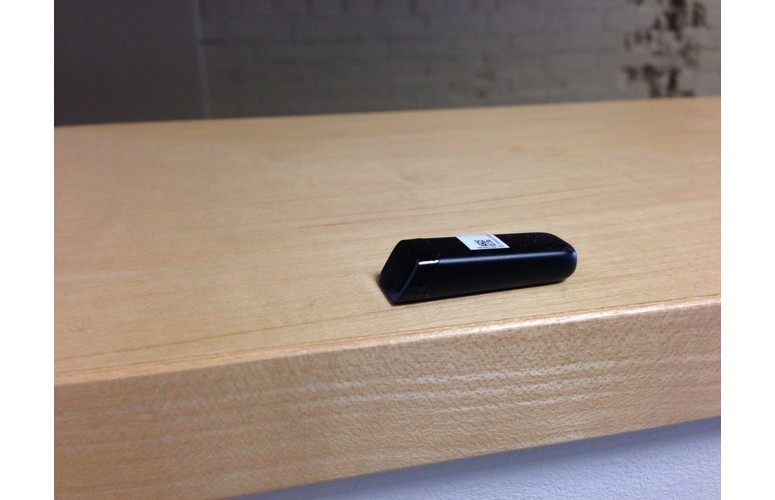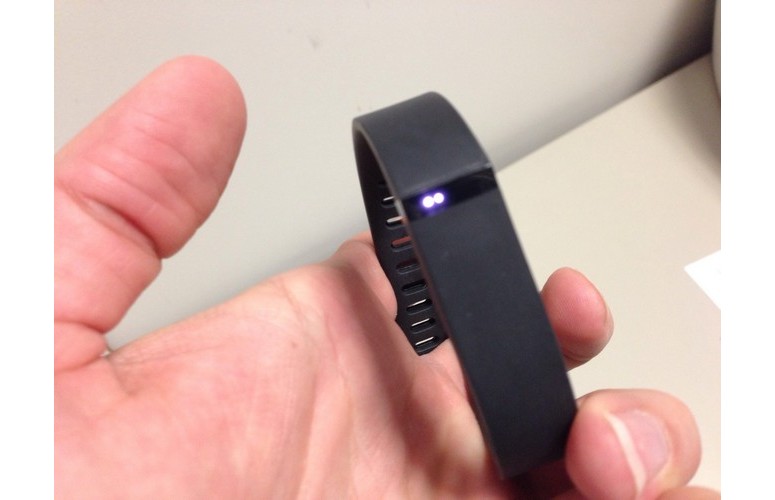Laptop Mag Verdict
With a svelte design, low price and a well-developed app ecosystem, the Fitbit Flex is the best all-around fitness-tracking band available.
Pros
- +
Minimal, comfortable design
- +
High level of customizability
- +
Comprehensive suite of applications
- +
Wide range of connected devices and services
Cons
- -
Android app a bit buggy
Why you can trust Laptop Mag
When it comes to personal fitness devices, Fitbit has a strong track record of connected scales and health trackers. However, the company recently fell behind the curve in the realm of wearable wrist devices such as the Nike+ Fuelband and Jawbone UP. No more. The Fitbit Flex is a wristband that tracks your daily activity as well as sleep patterns. At $99, it's less expensive than other offerings, too. Find out why the Flex is the must-have wearable fitness device of 2013.
Design

Click to EnlargeThe Fitbit Flex is the definition of minimalism. It's a small, flexible, rubberized band with notches on one end and clasps on the other to secure the device to the wearer's wrist. Weighing 0.47 - 0.51 ounces (depending on the band you use) and less than 0.5 inches at its thickest, the Flex is the most comfortable fitness band we've tested; even when we spent hours on end tapping away at a keyboard, the Flex was so comfortable we often forgot we were wearing it at all.
Getting the band on your wrist is a slightly different story, as we had to push down so hard on the clasps to secure the device that it would sometimes leave a temporary indentation on our skin.

Click to EnlargeOf the wearable fitness-tracking devices, Fitbit's Flex is the most customizable. Instead of the band and tracker being one unit, as with Nike's Fuelband and the Jawbone UP, the Flex's activity tracker is a small, pill-like device that's housed in the separate, rubberized band. The retail package comes with two colored bands, one small and one large, in either black or slate. The company has confirmed that slate, black, teal, navy blue and tangerine will be available at launch for $15 each, while a combination pack of teal, navy and tangerine bands will be available for $30.
MORE: Top Fitness Gadgets for 2013
The Flex is water resistant, and users can wear it safely in the shower or even while swimming at depths up to 10 meters (about 33 feet). The band also comes with a USB charging cable and a USB dongle, the latter of which can be plugged into your computer to wirelessly sync when your Flex is in range. A series of five blinking lights on the Flex will show progress towards your step goal as the day goes by, with each bulb representing 20 percent achievement.
Interface
Click to EnlargeFitbit has free companion applications for Android and iOS. The app shows your daily progress compared to established goals for number of steps, miles traveled, calories burned, sleep schedule, water consumption and caloric intake. A drop-down menu on the Android application provides further detail on your movements and sleep patterns in the form of charts and graphs, and the same is achieved via a bottom menu on the iPhone.
Of course, Fitbit knows that there's more to health tracking than just keeping tabs on your steps and sleep patterns. Both the mobile applications and Fitbit's Web-based management system allow you to manage and track your weight, body fat percentage, food and water consumption, and additional exercise activities performed throughout the day.
While the iPhone app worked as advertised throughout testing, we ran into a few issues with the Android version, most noticeably with graphs and charts failing to properly load. Fitbit is aware of these issues and will hopefully have fixes before launch. The company updated the Android application three times in the week we had the device.
MORE: 10 Best Fitness and Workout Apps
Syncing Your Device
Click to EnlargeData from the Flex can be synced to your smartphone or to Fitbit's Web dashboard (which can be accessed via https://www.fitbit.com/login). You can sync the Fitbit Flex via a wireless USB dongle or Bluetooth 4.0. When in range, the Flex will wirelessly sync with the included USB dongle as long as the device is plugged in and your computer is on.
The Jawbone UP, by comparison, forces you to plug the device into your smartphone's headphone jack in order to sync data.
If your phone has Bluetooth 4.0 connectivity and is on Fitbit's approved list of devices, the Flex will automatically update whenever your handset is in range. The iPhone and iPad, along with Samsung's Galaxy S III and Note II were all supported at the time of publication, though more devices will likely be added soon.
Diet Assistance
Diet is a key driver of overall health, and Fitbit Flex allows users to track their daily food consumption. The device has a comprehensive database of foods, and this database aims to make the tracking process as painless as possible. Searching for "banana" on the Fitbit Web application returns over 600 results, though the options are a bit more limited on the mobile applications, which returned around 30 results.
Once you've logged your meals, Fitbit will store this information in your most recent and most frequently used sections in the Add Food menu. You can also add foods you eat regularly to your Favorites, which then get stored in My Foods for easy adding later on.
Sleep Tracker
Click to EnlargeRapidly tapping on the Fitbit Flex for a few seconds launches sleep mode; under this setting, the device will track your sleep patterns throughout the night. When you awake, Flex presents you with information on how deep your sleep was, how long you slept and how many times you woke up. Flex also comes equipped with a Silent Alarm, which vibrates your wrist to wake you up at a predetermined time.
As someone who has trouble sleeping when the conditions aren't perfect, this tester was a bit worried about trying to fall asleep while essentially wearing a bracelet. Fortunately, the Flex is very comfortable on the wrist, and didn't affect sleeping patterns.
MORE: 5 Reasons You'll Wear a Smart Watch
Apps and Accessories
Click to EnlargeFitbit has an extensive API available to let third-party developers integrate their data into Fitbit's dashboard. As of this writing, there are 27 popular fitness applications available to use with the Fitbit, including Lose It!, Map My Run, My Fitness Pal and Endomondo. These apps will help you better incorporate your fitness and dietary data into Fitbit's system. Jawbone and Nike also have APIs available to developers, though Fitbit has the most comprehensive offering to date.
Jawbone currently syncs with 10 apps: RunKeeper, My Fitness Pal, Map My Fitness, Withings, iFTTT, Wello, Notch.me, Sleepio, Lose It and Maxwell Health.
Fitbit also produces a WiFi scale, the Aria, which automatically uploads your weight and body fat data whenever you step on the scale. The Aria will set you back about $130.
Social
What good is getting in shape if you can't brag about it? Fitbit lets you connect with Facebook friends or email contacts to share your fitness data. Connecting will let you encourage friends to keep at their goals, while Fitbit's leaderboard creates some competition. You can also share your daily results via Twitter, Facebook, Wordpress.com and Microsoft Health Vault for those friends without Fitbit accounts.
Battery Life
Click to EnlargeFitbit says the Flex will get between 5 and 7 days on a single charge. In our testing, that claim was fairly accurate; we only had to charge the device on day 6, putting the battery life on a par with other offerings, but below the 10 days we saw with the Jawbone UP. When the Flex syncs with your smartphone or tablet, the About Device section provides an overview of the remaining battery life on your Flex. However, it does so via a graphical overview instead of a solid percentage or time remaining like on competing devices.
Verdict

Click to EnlargeThe Fitbit Flex brings all the types of tracking tools needed to manage your path to better health, and, at $99, costs $30 less than the Jawbone UP and $50 less than the Nike+ FuelBand. The Flex is also the most comfortable gadget in this category to wear, works with more apps and can sync wirelessly with a greater number of devices. Fitbit has flexed its muscles in the wearable device market, and with its svelte design and low price point, the Flex is the new device to beat for people looking to take charge of their health.
Fitbit Flex Specs
| Accessories Type | Recording Device, Cell Phones Accessories, Bluetooth Device, Apple Accessories, Toys |
| Brand | FitBit |
| Company Website | http://www.fitbit.com/ |
| Weight | 0.47 - 0.51 ounces (depending on band) |
